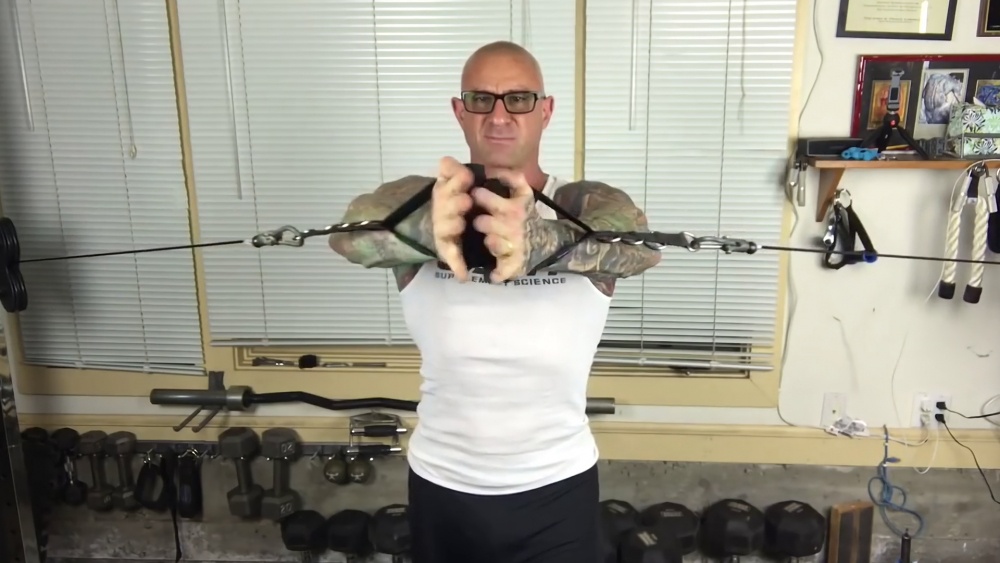Chest Workout: Cable Crossover Extended Sets
Finish off your next chest workout with this grueling extended set for balanced development in the upper, lower, middle, outer and inner pecs.

Finish off your next chest workout with this grueling extended set for balanced development in the upper, lower, middle, outer and inner pecs.

For a more muscular, well-balanced chest, I like hitting the pecs with high intensity and hitting all major areas of it (upper, middle and lower pecs, as well as the inner and outer portions). The cable crossover station is one of the best places to do this, and extended sets are one of my favorite intensity-boosting techniques. Combine the two and you have the highly effective Cable Crossover Extended Set that I recently came up with.
An extended set, in case you're not familar with it, is where you do multiple variations of a single movement in succession without resting, using the same weight and going to failure on each variation. The defining characteristic of an extended set is that you start with the most difficult variation of the movement and move to progressively easier biomechanical positions as your muscles fatigue – this is how you're able to stick with the same weight (and not have to waste time changing the load) throughout the set and still get a decent number of reps in each position.
Using chest as an example, generally speaking, the most difficult movement variations (the ones where you're forced to go the lightest) are those that target the upper pecs, while the easiest are those that hit the lower pecs. Consider incline presses, flat-bench presses and decline presses. Most people are able to go heaviest on declines, with incline presses being the lightest, and flat-bench presses falling in between there. The reason for this is simple: You're in a biomechanically more advantageous position when doing declines than you are with the other two angles, which allows you to use a heavier weight; the incline angle is the least advantageous position.
The same
Related Articles